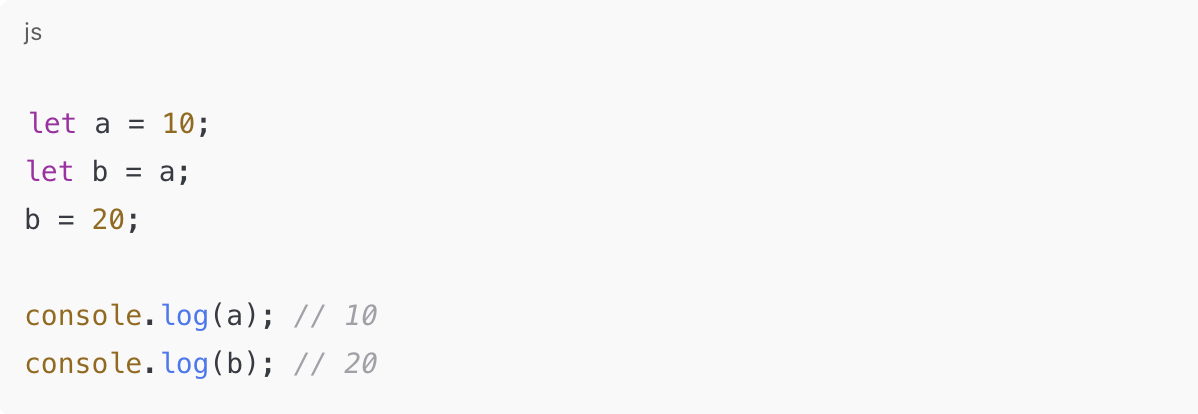When you’re assigning a variable in JavaScript, do you ever pause to wonder whether you’re copying the value—or a reference to something deeper? This question matters more than you think.
Let’s break down the difference between primitive types and reference types, using simple examples and visuals.
🔸 Primitive Types
Primitive types include string, number, boolean, undefined, null, bigint, and symbol.
They’re stored directly in memory and passed by value.

Here, changing b does not affect a. They’re separate values in memory.
🔹 Reference Types
Objects, arrays, and functions fall under reference types. These are stored in the heap, and variables just hold a reference to their memory address.

🖼️ Code Output Example:
Both person1 and person2 point to the same object, so changing one affects the other.
✍️ Final Thoughts
This is one of those JavaScript quirks that leads to unexpected bugs if you’re unaware of what’s happening under the hood. Just remember:
-
Primitives are copied by value.
-
References are… well, shared.
Understanding this will level up your debugging skills and help you write safer, more predictable code.
